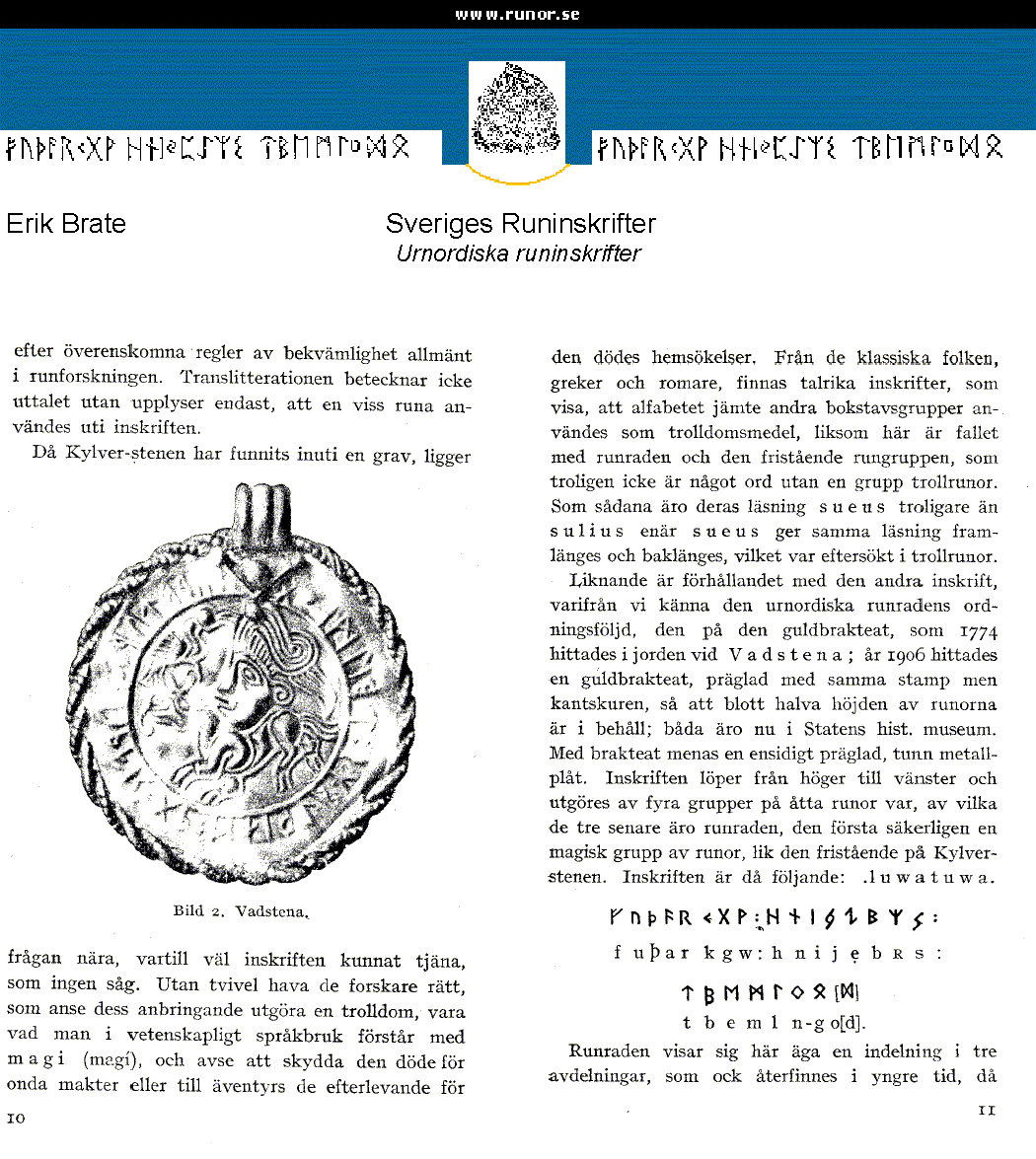
Transliteration doesn’t denote the pronunciation, but informs only, that a certain rune was used in the inscription.
Picture 2, Vadstena
Then as the Kylver-stone has existed insides a grave, there is a question: Why make an inscription when there
is no one who can see it?
Without doubt those researchers are correct, that
consider it’s fitting to constitute a witchcraft or magic, and to
intend to protect the dead for evil powers or to the surviving
relatives for the buried rise from the dead.
From the classic people, Greeks and Romans, exist
numerous inscriptions, which demonstrate, that the alphabet and other
letter groups was used for magic means, like here in these case with
the runic alphabet and the independent rune group, which probably isn’t
a word, but a group of magic runes. As such is their reading sueus more
plausible than sulius since sueus gives the same reading forwards and
backwards, which were very common in magic runes.
Similar is the relation with the other inscriptions,
where we know the old nordic futhark sequence, the one on the
gouldbrakteat, which in the year 1774 was found in the land at
Vadstena; and another in the year 1906 was found on a gouldbrakteat,
embossed with same stamp but broken at the edge, so that only the half
height of the runes is in retains; both renown now in the State's
historical museum.
With bracteates is meant a narrow-minded embossed, thin
metal plate. The Inscription goes from right to left and is constituted
of four groups with eight runes each, of which the three latter is the
rune sequence, the first doubtless a magic group of runes, equal that
one on the Kylverstone.
The inscription is as follows:
.luwatuwa.
f u þ a r k g w: h n i j ї b R s: t b e m l ŋ o (d)
The Rune sequence shows itself here to consist of a
subdivision in three parts, which also is found in younger time, then